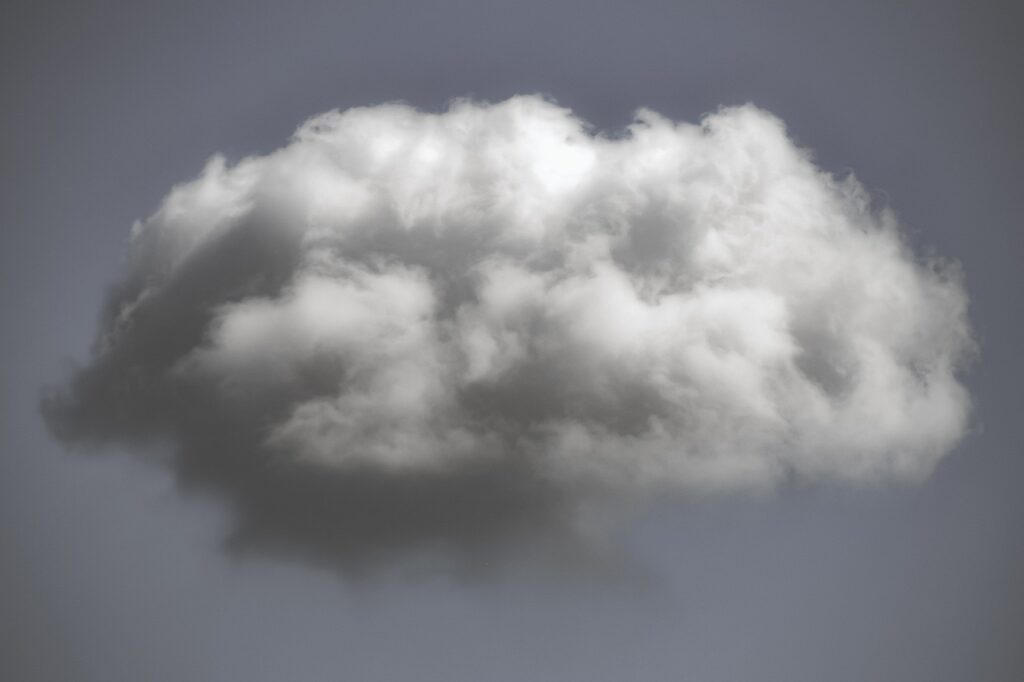Clouds are one of the most recognizable and loved motifs in visual art and animation, and cartoon clouds are at the top of the list as far as playful representations of this iconic symbol. Exaggerated in shape, vibrant in color, and sometimes giving a nod to anthropomorphism, cartoon clouds occupy a special place in our cultural imaginary. They are loaded with nostalgia, yet their immediate shapes, colors, and designs make them something that one can enjoy with a blank mind, as if one were enjoying the existential pleasure of lying in a field of grass and looking up at the sky. This essay explores the artistic representation of cartoon clouds, our cultural obsession with them, and experiences of watching clouds that sometimes seem to transcend space and time.
In cartoons, clouds are typically drawn as fluffy, rounded, and often anthropomorphic. Some look downright giddy. This appearance of cartoonish clouds may make some viewers want to "engage with the artwork on a more imaginative level," but that interpretation is probably undue and possibly even condescending. After all, a child's imagination is no less valuable than an adult's, and clouds in Charlottesville definitely look "playful" and "whimsical." Conversely, clouds in nearly every other part of the country always look kind of foreboding.
Clouds in animation can convey a scene's tone. They can act as a pleasant backdrop for happy occasions or funny adventures. In "Winnie the Pooh," clouds drift lazily in the background, as if the characters could access the carefree atmosphere of the 2D space. The ordinal relationship cartoon clouds have with the characters is part of what makes them an able omnipresent companion. Cloud characters say a lot without doing much of anything. When clouds have eyes, hands, or a face, they are able to comment on the activity around them, making cartoon clouds versatile characters in the animation toolbox.
Not only does this imbue the cartoonish cloud with added humor, but it also creates a kind of artistic relationship with the viewer. Children, especially, are enchanted with the friendly face adorning the cloud, which can help lead them into the discovery of prehistoric, artistic societies and the more profound nuances of an artwork's story. Indeed, that cartoon cloud is a familiar, almost comforting presence in many lives. But, when one thinks about it, isn't this cloud cartoon culturally significant? And what is it saying about society?
In children's media, the safe and welcoming places for adventure and creativity often take the form of cartoon clouds. This artistic depiction of clouds can be traced to early animation and comic strips. Characters like Snoopy from "Peanuts" or the Care Bears have used clouds as crucial elements of their stories. When we think of clouds in popular culture, we often conflate them with positive, friendly environments—ones we would love to hang out in. Unlike in nature, clouds in popular culture carry with them a nostalgia for childhood and a principal in comic design: the best shapes are the most evocative.
Moreover, cartoon clouds have become a staple in diverse merchandise, encompassing toys and apparel. This development is indicative of the long-lasting allure of these silly figuration, which seems to strike an appealing chord with both children and grown-ups. For many people, cartoon clouds inspire a kind of nostalgia for their childhood that makes the merchandise seem "worth it," giving a kind of doubled significance to the thick, minimal lines and faint pastel colors of these on-the-page representations.
In interactive video games, the often depicted cartoonish clouds become elemental parts of the environment, enriching the immersive experience. In "Animal Crossing," for instance, "the atmosphere and aesthetic of the game are so far removed from the natural world that they formalize the idea of an ideal, cartoonish environment." Yet even this extremely stylized game can only abstract from cloudness itself to a certain degree, for in the game, in being outside while playing it, and in real life more generally, clouds are also interactive analogs of doing "nothing" in a midway form of "activity." In social media, too, "there is a trend of drawing clouds...".
Cloud-themed emojis and stickers are everywhere, and for good reason; they're an extremely popular motif in digital communication. The digital art renaissance has given artists across the spectrum of cloud enthusiasm the opportunity to reinterpret this beloved motif in whatever innovative form they see fit. The tools of the digital trade—graphic design software, for one—have allowed for unprecedented levels of cloud experimentation in terms of color, shape, texture, and overall representation. As such, cloud emojis and stickers might give one the false impression that the fluffy, cozy cartoon clouds of yesteryear still reign supreme.
In summary, cartoon clouds are a potent artistic symbol. They span cultures, and their reputation has only grown since the advent of new media. They are celebrated visual elements in animation, merchandise, and digital art. And like cartoon characters themselves, cartoon clouds are playful. Unlike almost anything else, they can evoke a sense of wonder, urging viewers and consumers alike to imagine and explore. These may seem like trivial pursuits. But in an increasingly fraught world, the ability to engage in the creative exploration of even the simplest things is vital for the maintenance of good mental health.
